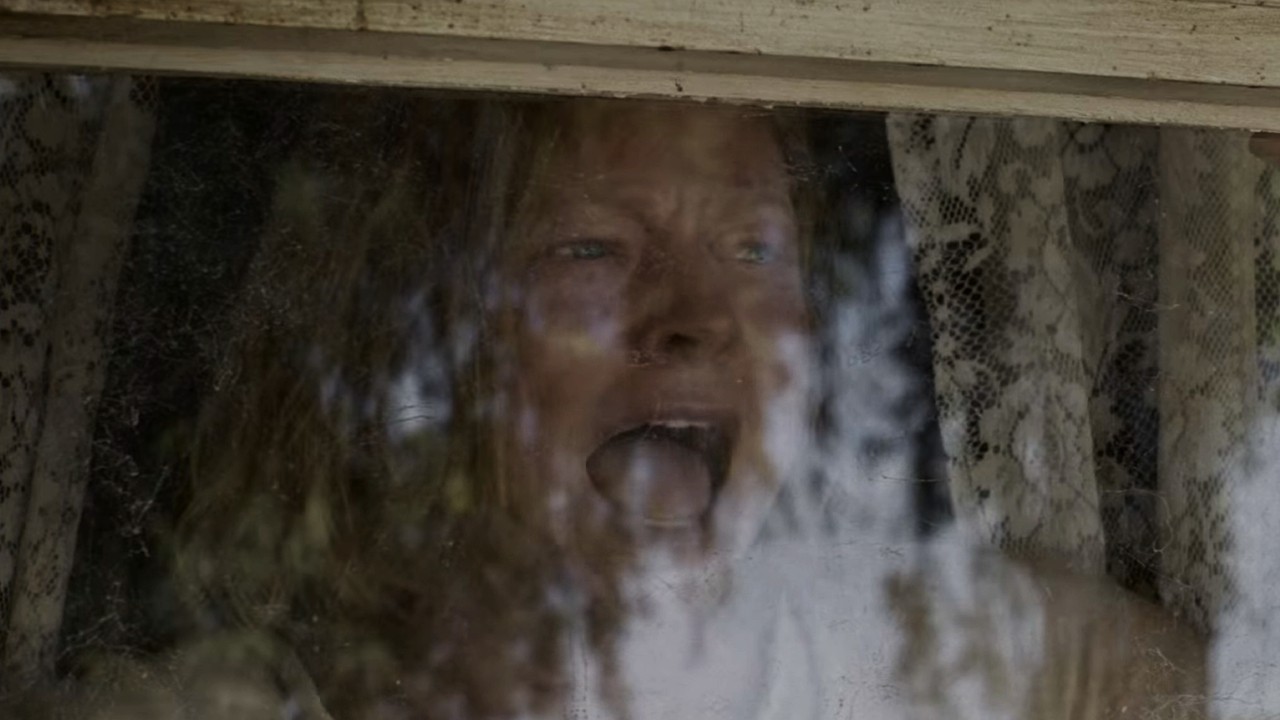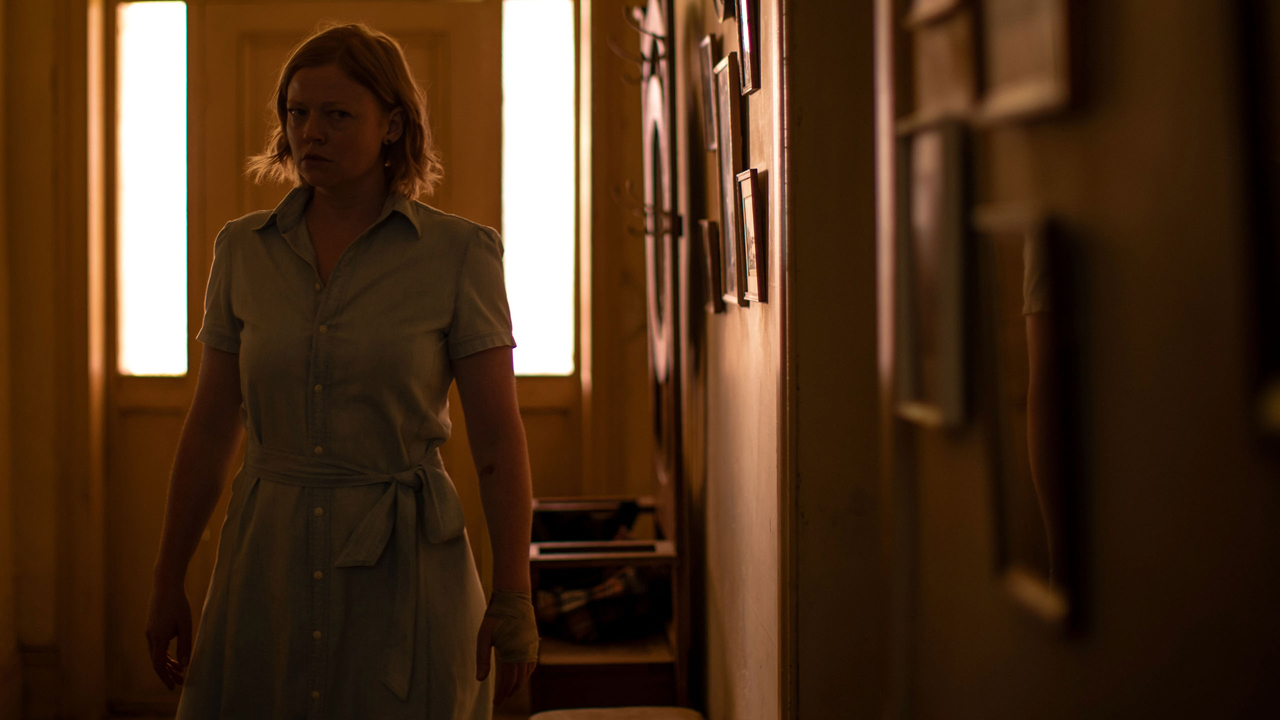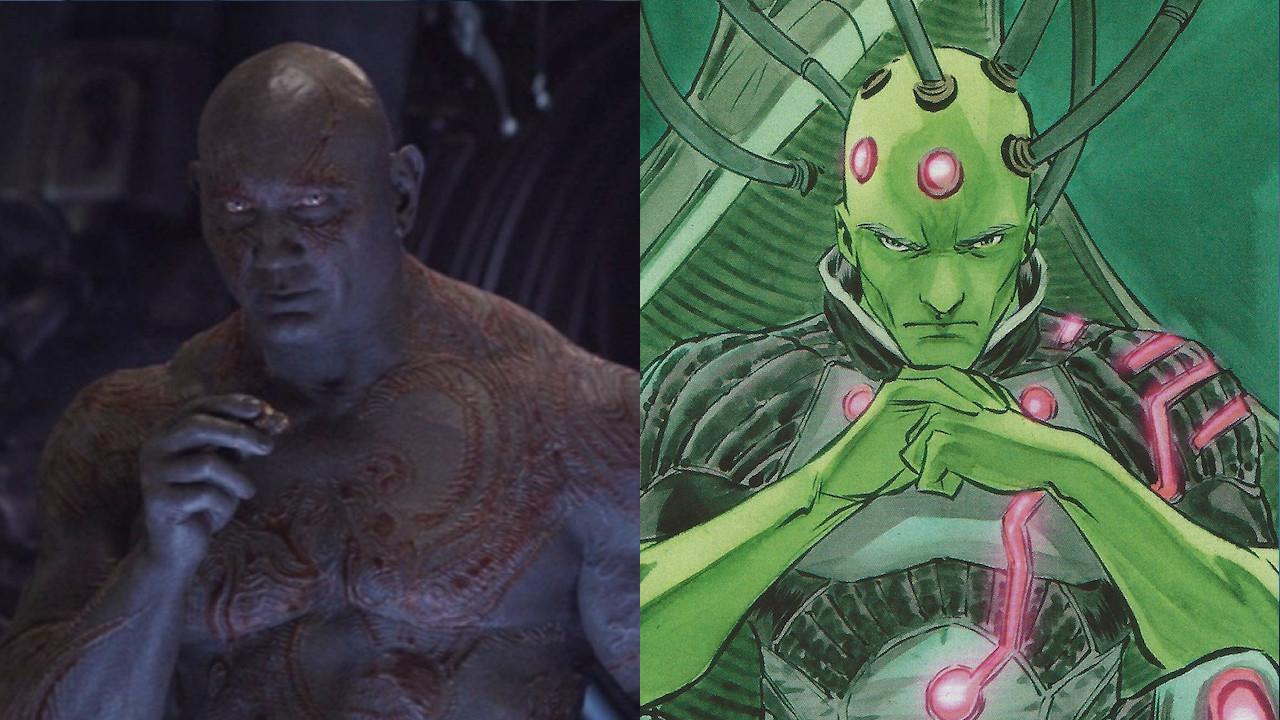Run Rabbit Run Ending Explained: What Happens To Mia In The Netflix Horror Movie?
No, it's not a Pink Floyd reference.

SPOILER WARNING: This article goes deep into the new horror movie, Run Rabbit Run, so if you have not seen it, remember that slow and steady wins the race as you read on.
As a longtime horror fan, I have, more recently, found myself particularly disturbed by thrillers that deal with the topic of parenthood — though I currently have no children of my own. One of the best horror movies to tackle that theme as of late is the new Netflix original movie, Run Rabbit Run.
From director Daina Reid and writer Hannah Kent, this Australian movie tells the story of a fertility doctor named Sarah (Succession cast member Sarah Snook), whose daughter, Mia (Lily LaTorre), begins to exhibit very odd behavior — like claiming to be someone named Alice — the day after she turns seven years old. Obviously, this causes much concern for Sarah, which only grows worse as she begins to realize the strange events plaguing her lately are related to a traumatic event from her past that she thought she had managed to put away.
Let’s take a deeper look at who this ghost from Sarah’s past is, how they affect her relationship with Mia (and Mia herself), and what it all represents in our breakdown of the Run Rabbit Run ending — starting with a refresher on the chilling conclusion.

What Happens At The End Of Run Rabbit Run?
Sarah takes Mia to stay at her childhood home, where her strange behavior only increases — demanding to sleep in the room that belonged to Sarah’s long-missing sister, Alice, wearing her clothing, and bearing mysterious head injuries — during which Sarah’s well-being also gets much worse.
At one point, Sarah unlocks a cupboard in the barn, which Alice (Sunny Whelan) — either a hallucination or her actual spirit — bursts out of and begins strangling her, shouting about how she kept her trapped inside the cupboard during a game of hide and seek, before Sarah retaliates by hitting her in the head with a rabbit trap. After Alice’s visage disappears, she then sees Mia standing at the door, mistakes her for Alice, and begins chasing her into the house, where she bangs her head on a door, knocks herself out, and begins dreaming of how her sister died.
Similar to how Sarah chased Mia out of the barn, we see Sarah chasing Alice out of the barn, with the rabbit trap still in her hand, toward a nearby cliff, which is intercut with flashes of Sarah’s younger self (Poppy Skerry) in her place, showing us what really happened that day. When they reach the edge of the cliff, Alice turns to show her sister that blood is coming from a wound in her forehead and out through her nose. As Alice lets out a disturbing, guttural scream, Sarah pushes Alice off the cliff to hide her mistake.
Your Daily Blend of Entertainment News
Sarah wakes up to her ex-husband Pete, (former Justified cast member and two-time Charles Manson portrayer, Damon Herriman), shouting about Mia, whom they go searching for by the river behind the cliff — in which Sarah sees a vision of a drowned Alice. After finding Mia under some bushes, later that night, she speaks to her as if she is Alice, apologizing for lying to their mother, Joan (Greta Scacchi), about what happened to her and admitting she is a “monster.” The next morning, Sarah wakes to find Mia gone and, after searching the house for her, watches in distress from a bedroom window as she is guided by Alice toward the edge of the cliff.

The Finale Sees Sarah's Worst Fears Come True
As our own Eric Eisenberg mentions in his review of Run Rabbit Run after seeing its Sundance Festival premiere, the final moment of the film is a satisfyingly spooky payoff to its slow-burn horror structure. In addition to its supernatural elements and creepy jump scares, the story is really about Sarah’s struggle to confront the fatal mistake she made years ago and how her fear to address it has only caused those memories to return with a vengeance. Even worse, it threatens to drive a wedge between her and Mia — a conflict that reaches its peak at the conclusion.
When we see Alice’s ghost walking hand-in-hand with Mia toward the edge of the cliff where Sarah killed her, we are literally seeing her lose her daughter right before her eyes, which I believe is meant to represent the feeling that parents would experience if their relationship with their own children were to become hostile and, ultimately, severed entirely. Alice’s reincarnation through Mia (or use of her as a vessel, perhaps) symbolizes Sarah’s insecurity as a parent, built up out of the fear that her mistake and her own inner demons would live on through or bring harm to her child, which is a bit similar to Ari Aster's Hereditary ending.

A Story Of How Past Affects Parenthood
Historical novelist Hannah Kent — who makes her screenwriting debut with Run Rabbit Run — revealed in an interview with HorrorBuzz that that the catalyst for the film was true stories of children reporting previous lives and claiming to be other people, which she imagined would be an extremely unsettling situation for a parent to confront.
When discussing said topic with director Daina Reid and the film’s producers, the conversation would curdle into a more distinct examination of parenthood and some of the more uncomfortable subjects related to it that often go unspoken — such as the common fear of being a bad parent or, more specifically, passing on unaddressed trauma or self-loathing to your own children. That is a perfect summation of what, metaphorically, happens between Sarah and Mia in the film.
The insecurities that can come from becoming a parent are also certainly not lost on Reid, who directs her second feature film here after helming episodes of TV shows like The Handmaids Tale and Young Rock, to name a few. The filmmaker says in a behind-the-scenes featurette by Screen Australia that, being a parent herself, she was attracted to the story as a way to shed light on how frightening it can be to bring a child into the world — not necessarily what harm outside forces can bring to them, but what harm the parent could bring them if they have not put in the effort to heal their own wounds.
In the same video, she also discusses how the titular rabbit in the film — in addition to mirroring Mia’s nickname, “Bunny” — is, already a symbol of prey, meant to represent the victimhood and vulnerability that women often face and both Mia and Sarah experience in their own ways.
I also learned from another interview with Kent for Watch or Pass that she is “terrified of scary films,” which is intriguing when you consider how she managed to pen such a disturbing and deeply thought-provoking thriller out of Run Rabbit Run. Perhaps that is the secret as to why the film has become one of the most popular of the best movies on Netflix, and why other recent horror favorites of a similar vein have achieved such esteem: by focusing less on the scares and more on what the scares mean.

Jason Wiese writes feature stories for CinemaBlend. His occupation results from years dreaming of a filmmaking career, settling on a "professional film fan" career, studying journalism at Lindenwood University in St. Charles, MO (where he served as Culture Editor for its student-run print and online publications), and a brief stint of reviewing movies for fun. He would later continue that side-hustle of film criticism on TikTok (@wiesewisdom), where he posts videos on a semi-weekly basis. Look for his name in almost any article about Batman.
